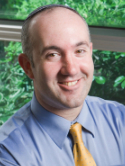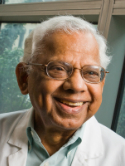Testicular mixed germ cell tumors: A morphological and immunohistochemical study using stem cell markers, OCT3/4, SOX2 and GDF3, with emphasis on morphologically difficult-to-classify areas Journal Article
| Authors: | Gopalan, A.; Dhall, D.; Olgac, S.; Fine, S. W.; Korkola, J. E.; Houldsworth, J.; Chaganti, R. S.; Bosl, G. J.; Reuter, V. E.; Tickoo, S. K. |
| Article Title: | Testicular mixed germ cell tumors: A morphological and immunohistochemical study using stem cell markers, OCT3/4, SOX2 and GDF3, with emphasis on morphologically difficult-to-classify areas |
| Abstract: | Stem cell markers, OCT3/4, and more recently SOX2 and growth differentiation factor 3 (GDF3), have been reported to be expressed variably in germ cell tumors. We investigated the immunohistochemical expression of these markers in different testicular germ cell tumors, and their utility in the differential diagnosis of morphologically difficult-to-classify components of these tumors. A total of 50 mixed testicular germ cell tumors, 43 also containing difficult-to-classify areas, were studied. In these areas, multiple morphological parameters were noted, and high-grade nuclear details similar to typical embryonal carcinoma were considered embryonal carcinoma-like high-grade. Immunohistochemical staining for OCT3/4, c-kit, CD30, SOX2, and GDF3 was performed and graded in each component as 0, negative; 1, 1-25%; 2, 26-50%; and 3, 50% positive staining cells. The different components identified in these tumors were seminoma (8), embryonal carcinoma (50), yolk sac tumor (40), teratoma (40), choriocarcinoma (3) and intra-tubular germ cell neoplasia, unclassified (35). By immunohistochemistry, the staining patterns were OCT3/4 3, all seminomas, embryonal carcinomas and intra-tubular germ cell neoplasia; SOX2 3, all embryonal carcinomas and 2 to 3, 11/14 (79%) primitive neuroectodermal components in immature teratomas; GDF3 2 to 3, all yolk sac tumors, seminomas and intra-tubular germ cell neoplasia and 1 to 2, 40/50 embryonal carcinomas. A total of 34/43 (79%) of difficult-to-classify areas stained 3 for OCT3/4, CD30, and SOX2, similar to embryonal carcinoma. Among these areas, only embryonal carcinoma-like high-grade nuclear details were significantly associated with such an immunophenotype. Thus, SOX2 is expressed in embryonal carcinoma and primitive neuroectoderm of teratoma, and unlike OCT3/4, not in intra-tubular germ cell neoplasia and seminoma. Therefore, it may be useful in the distinction of seminoma from embryonal carcinoma, and potentially in diagnosing early carcinomatous differentiation in seminoma. GDF3 positivity, in the absence of OCT3/4 and CD30, combined with morphological features, is helpful in the diagnosis of yolk sac tumor. Embryonal carcinoma-like high-grade nuclear details are the most important morphological criterion for the diagnosis of embryonal carcinoma in difficult-to-classify areas. © 2009 USCAP, Inc. |
| Keywords: | immunohistochemistry; human tissue; protein expression; unclassified drug; stem cell factor; stem cell factor receptor; gene expression; gene expression profiling; differential diagnosis; tumor markers, biological; immunoreactivity; stem cell; testicular neoplasms; transforming growth factor; immunophenotyping; mixed tumor; teratoma; neoplasms, germ cell and embryonal; growth factor; germ cell tumor; germ cell tumors; tumor classification; neuroectoderm tumor; gdf3; oct3/4; sox2; testis; cd30 ligand; growth differentiation factor 3; octamer transcription factor 4; transcription factor sox2; choriocarcinoma; embryonal carcinoma; morphological trait; seminoma; yolk sac tumor; octamer transcription factor-3; soxb1 transcription factors |
| Journal Title: | Modern Pathology |
| Volume: | 22 |
| Issue: | 8 |
| ISSN: | 0893-3952 |
| Publisher: | Nature Research |
| Date Published: | 2009-08-01 |
| Start Page: | 1066 |
| End Page: | 1074 |
| Language: | English |
| DOI: | 10.1038/modpathol.2009.66 |
| PUBMED: | 19396148 |
| PROVIDER: | scopus |
| DOI/URL: | |
| Notes: | --- - "Cited By (since 1996): 5" - "Export Date: 30 November 2010" - "CODEN: MODPE" - "Source: Scopus" |
Altmetric
Citation Impact
BMJ Impact Analytics
MSK Authors
Related MSK Work









